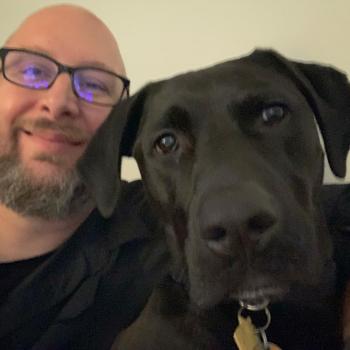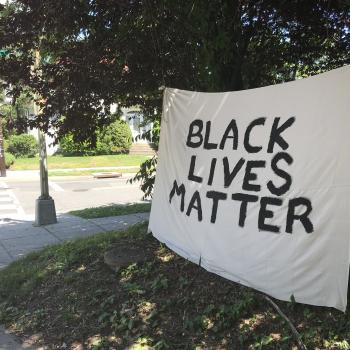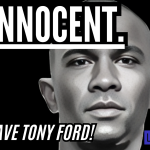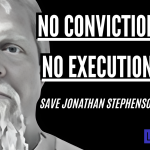You are a person of color. You live here. You have always lived here. A white man, armed, with the force of law behind him, gives you an instruction. You may not understand it. It may not be in your language. You may be scared, and try to run. You may comply, but not fast enough. Someone shouts, “Stop resisting!” And then you are dead.
Sound familiar? It’s not what you think.
Requerimiento
The year is 1513. The white man is Pedrarias Dávila, or any number of other conquistadors. The instruction is the Requerimiento, or “Requirement.” It outlines the divine right of the Spanish people to conquest in the New World, and sets the groundwork for the subjugation or murder of any indigenous people who “resist.”
The “Americas,” under that name, were founded on white Christian entitlement—to the land, to the resources, and to the very bodies of the tens of millions of people white Christians murdered, enslaved and displaced to make their claim. And it didn’t stop there.
From the papal bull, Dum Diversas, on which logic the Requerimiento was based, through the doctrine of “manifest destiny” that allowed for American Indian genocide and the “principles of Christianity” that supported chattel slavery, to the Ku Klux Klan, the Westboro Baptist Church, the “Blue Lives Matter” movement and the long racist history of both candidates for American president—the idea that white, Christian men are entitled to that which others are not has pervaded and perverted American history for as long as American history has existed.
The Water
And so when millions of (mostly) white Christians take to the Internet to defend the actions of officers like the Kenosha, WI police who shot Jacob Blake seven times in the back, or police-state fetishists like Kyle Rittenhouse who drove to a city he doesn’t live in with a weapon that was illegal for him to have to “protect” property that wasn’t his from the specter of #BLM protestors—three of whom he shot—is it really any surprise? When mostly white Christian men show up en masse to protests with all manner of firearms, bringing fantasies of blowing away “libs” and people of color, is there any reason to believe this is new?
White supremacy is the water these fish swim in, and most of them won’t or can’t even acknowledge it exists.
Deuteronomistic History
But of course, the theology these various groups and doctrines are built on is not actually “Christian” in any sense. To begin with, the story they are based on ends 587 years before Christ was born.
Almost every reference to “chosen people,” “promised land” or any other Biblical root of white supremacy begins in the person of Moses, the putative author of the first five books of the Christian Bible, or the history outlined in Joshua, Judges, Samuel and Kings that follows the Israelite people from just before they crossed the river Jordan until just after the siege of Jerusalem and the fall of Solomon’s temple in 587/586 BCE. Of course, no scholar believes this history is factual—theologian Walter Brueggemann calls it “theological testimony” instead—but even if for the sake of argument every single word was taken literally, it still would not support what extremist Christians believe it supports.
It is true that the generations that followed Moses were in fact violent, genocidal colonizers—at least as popularly represented. They destroyed whole nations, took what they wanted, and murdered, enslaved or displaced everyone. But what gets left out in the modern telling is that they paid for their actions. Over and over again, the Davids and Solomons of the world became drunk with power, turned away from God, and fell from grace. They were not faithful. Their actions were self-serving. They broke covenant. Eventually, their faithlessness and hypocrisy became so bad the “promised land” became un-promised, and the Israelites were forced into exile. In the Book of Jeremiah, which many scholars attach to this same “deuteronomistic history,” just after God promises an eventual return to the land “to build and to plant” (Je. 31:27, NRSV), God tells Jeremiah:
The days are surely coming, says the Lord, when I will make a new covenant with the house of Israel and the house of Judah. It will not be like the covenant that I made with their ancestors when I took them by the hand to bring them out of the land of Egypt—a covenant that they broke, though I was their husband, says the Lord. But this is the covenant that I will make with the house of Israel after those days, says the Lord: I will put my law within them, and I will write it on their hearts; and I will be their God, and they shall be my people. (vv. 31-33).
As the author of Hebrews makes clear, referencing this promise multiple times, this new covenant is the one Jesus brings, which “is superior to the old one, since the new covenant is established on better promises” (He. 8:6), and it makes the old system “obsolete and outdated” (v. 13).
A New Covenant
So what new promise did Jesus bring? Among other things, in his Gospel account, Luke describes an incident near the beginning of Jesus’ public ministry, at the synagogue at Nazareth where Jesus “had been brought up,” when Jesus “stood up to read”:
He unrolled the scroll [of Isaiah] and found the place where it was written:
The Spirit of the Lord is upon me,
because he has anointed me
to bring good news to the poor.
He has sent me to proclaim release to the captives
and recovery of sight to the blind,
to let the oppressed go free,
to proclaim the year of the Lord’s favor.
And he rolled up the scroll, gave it back to the attendant, and sat down. The eyes of all in the synagogue were fixed on him. Then he began to say to them, “Today this scripture has been fulfilled in your hearing” (Lk. 4:16-21).
Christ spoke again and again to the blessedness of the oppressed and downtrodden (the Beatitudes) and the need for love among neighbors (the Great Commandment). Born into an ethnic minority on the outskirts of the Roman Empire, he spoke against the religious and police state of his time over and over, and was eventually killed for it. In essence, Christ was the #BLM of his time.
Changing the Water
But of course the Rittenhouses and Kenosha police of the world don’t want to believe this. They don’t wan’t to believe in the message of Christ. They don’t want to believe the United States of America is not the Levant in the 5th and 6th centuries BCE. They don’t want to believe they are not the armies of Joshua or David. They are not Israelite at all, let alone pre-exilic. They identify with the conquistadors, or the “settlers” of the American West. They identify with the slaveholders and segregationists and Klansmen. Their vigilante violence is based, at its core, on a fundamental misunderstanding of God.
In a world where the Evangelical Right is constantly calling for a return to ancient ways—for an actual or metaphorical rebuilding of the temple that would put their vision of a modern (white, protestant, American, cowboy) Israelite people in power and all others in subjugation—it is more and more important that actually Christ-centered Christians speak up and remind them that their era was over millennia ago, if in fact it ever existed.
White Nationalism might be the water these people swim in, but that doesn’t mean that water can’t be changed.

















